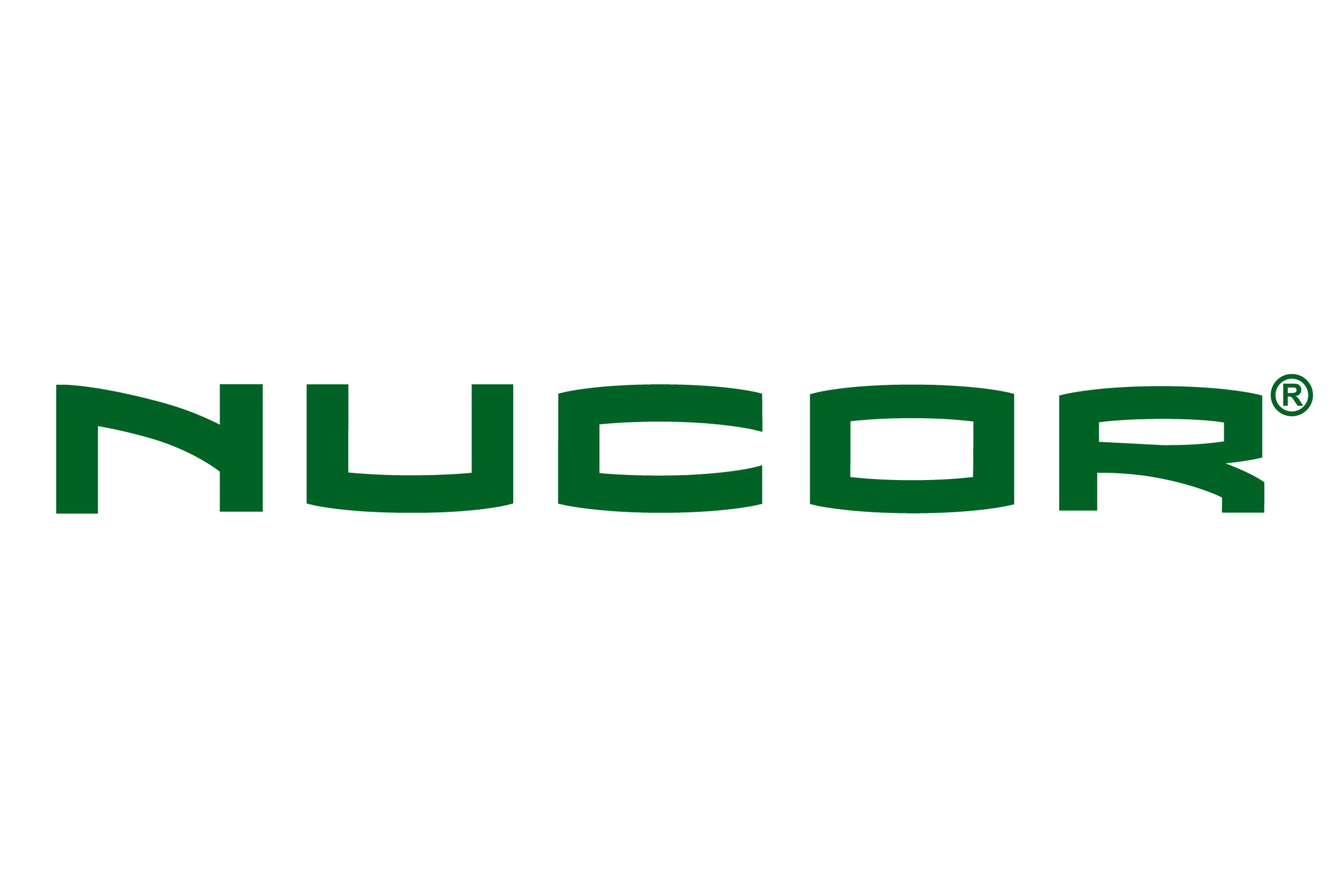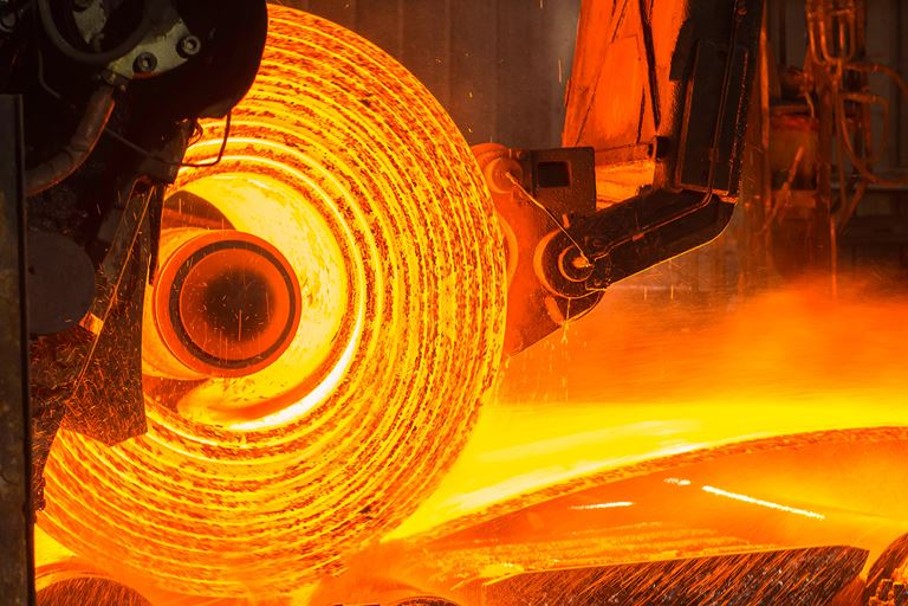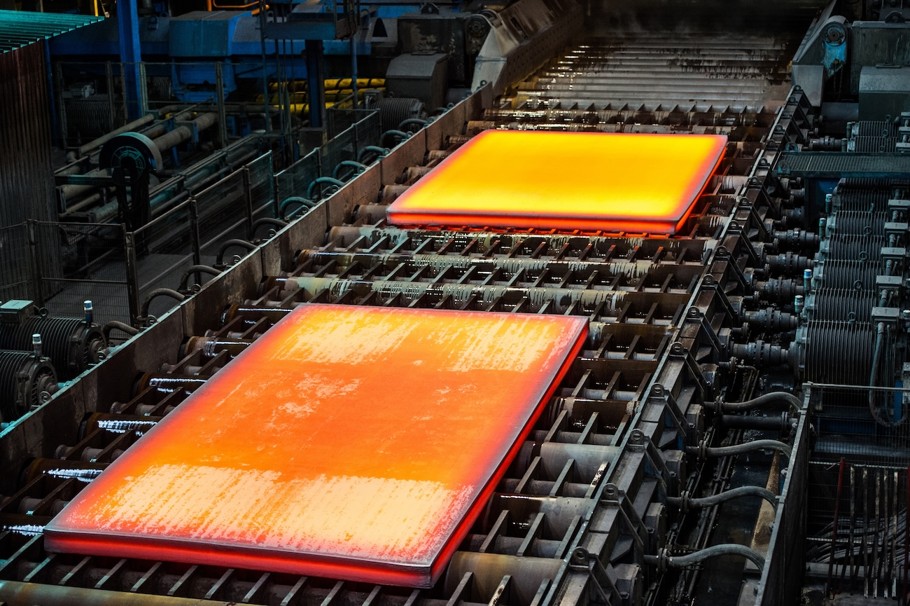Prices

February 12, 2025
HRC vs. prime scrap spread increases in February
Written by Ethan Bernard & Stephen Miller
The price spread between hot-rolled coil (HRC) and prime scrap widened in February ahead of the implementation of President Trump’s tariffs on steel, according to SMU’s most recent pricing data.
SMU’s average HRC price increased week over week (w/w) and month over month. The February price for busheling also jumped from January.
Our average HRC price as of Feb. 11 was $760 per short ton (st) FOB mill, east of the Rockies, up $35 w/w. Compared to a month earlier, HRC prices have risen $75/st.
Meanwhile, busheling tags also increased in February from January. They are up $35 per gross ton (gt) from last month, averaging $447.50/gt. Figure 1 shows price histories for each product.
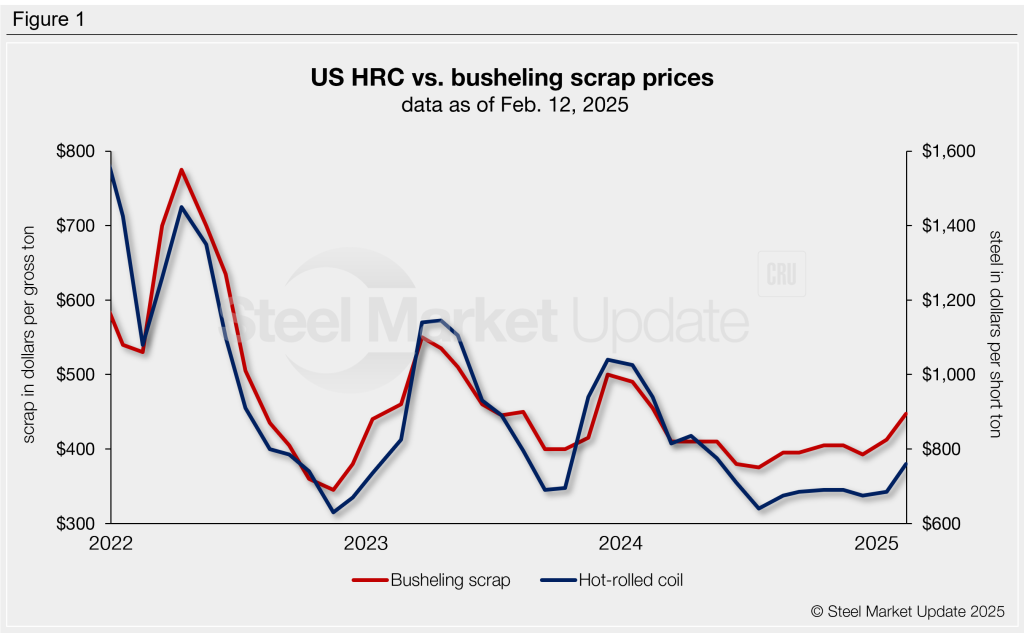
After converting scrap prices to dollars per short ton for an equal comparison, the differential between HRC and busheling scrap prices was $360/st as of Feb. 12. That’s up $43/st from the previous month (Figure 2). This is the widest margin since it touched $371/st in June.
What’s going on?
The price of busheling on average increased $35/gt, but many mills went up a solid $40/gt, and some even higher.
The HRC price increased substantially in the same time frame, but can it continue?
Tariffs may assist it to a degree, but the mills need more business from automotive. When automotive production is poor, less prime scrap is generated.
Ferrous scrap prices are expected to continue rising next month. HRC will also have to rise to prevent narrowing of the spread.
(For more information on the Trump tariffs, click here.)
HRC premium as a percentage
The chart on the right-hand side below shows the spread relationship differently: We have graphed HRC’s premium over busheling scrap as a percentage. HRC prices hold a 70% premium over prime scrap. That’s up from 66% a month prior.
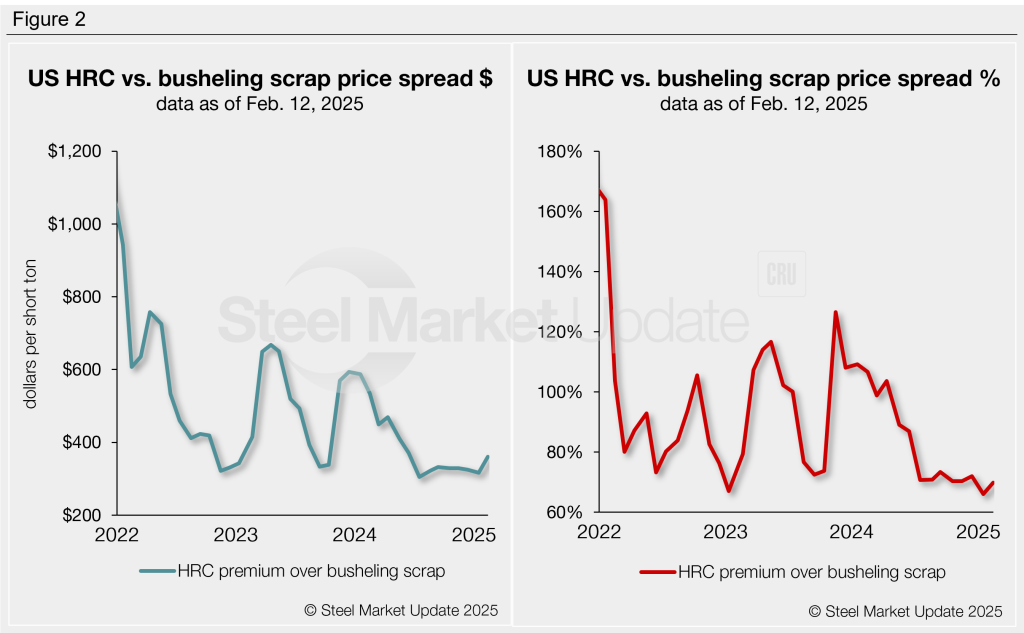

Ethan Bernard
Read more from Ethan Bernard



